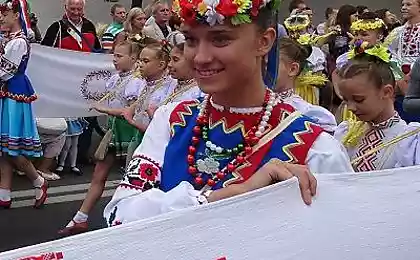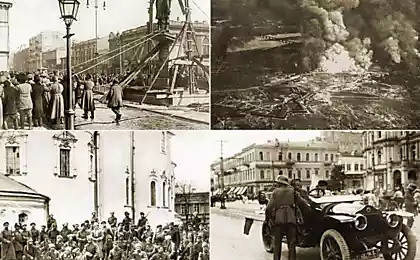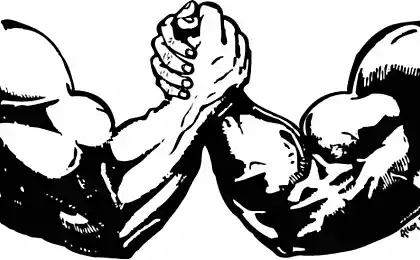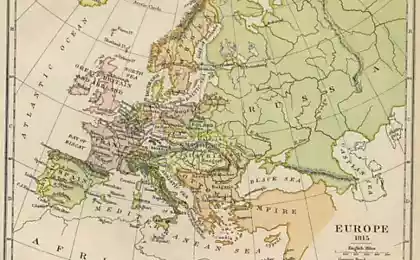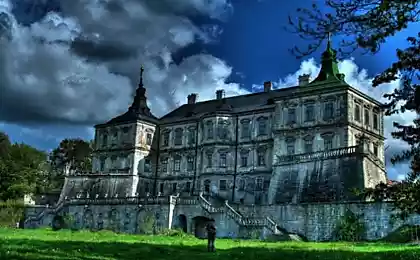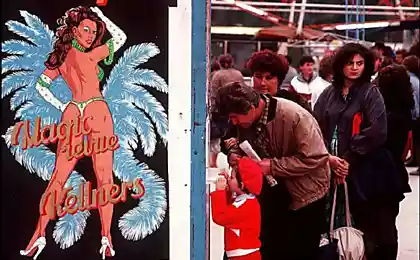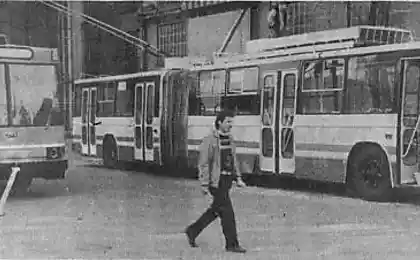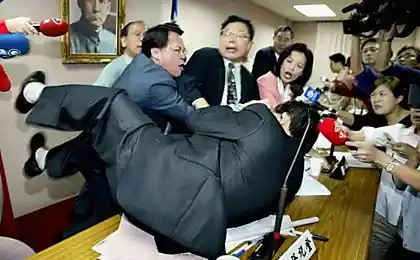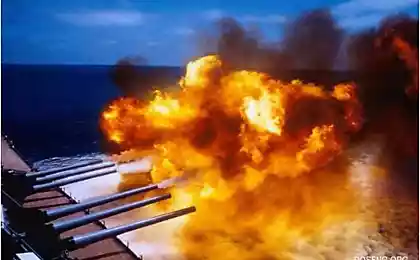2572
Kiev authorities under fourteen. PART 1: from the Central Rada to hetman
Kiev coups from 1917 to 1920. For thirty-nine months, from March 1917 to June 1920, the government changed in fourteen times.
Will focus on the unique period, nothing like that in the history of Kiev was not previously and - hopefully! - Does not happen in the future. For thirty-nine months, from March 1917 to June 1920, the government changed in fourteen times. Some of the then Kiev were practically bloodless coups, and others - have cost the lives considerable number Kyivers ...
Text © Stefan Mashkevich. Publisher "Wart»
Source of illustrations: a collection of the publishing house "Wart", photographs of TSGKFFAU them. G. Wheat
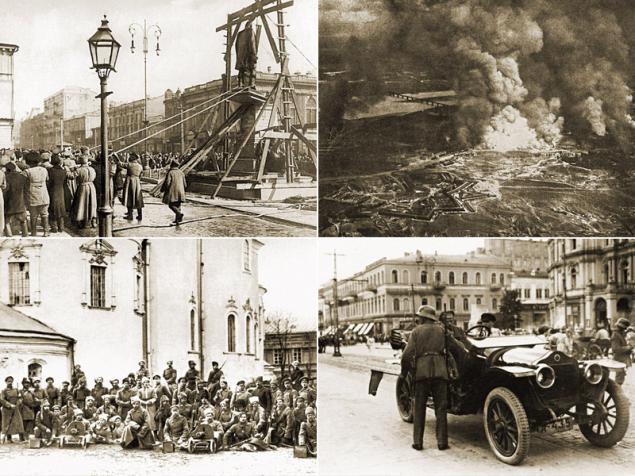
Provisional Government. 2 (15) of March - 7 (20) November 1917
The news of the fall of three hundred years of the Romanov dynasty reached Kiev is not instantaneous. In our city, at first everything was calmer than in Petrograd - but learning about the variables (their herald to Kiev became a State Duma deputy Alexander Bublikov, send a telegram to the famed Mikhail Bulgakov, which began with the words "The old regime has fallen"), Kiev residents took to the streets. The word "Freedom!" Was in the air, though, perhaps, a few at a time to understand exactly what is behind it, and that very few people knew how it would end ...
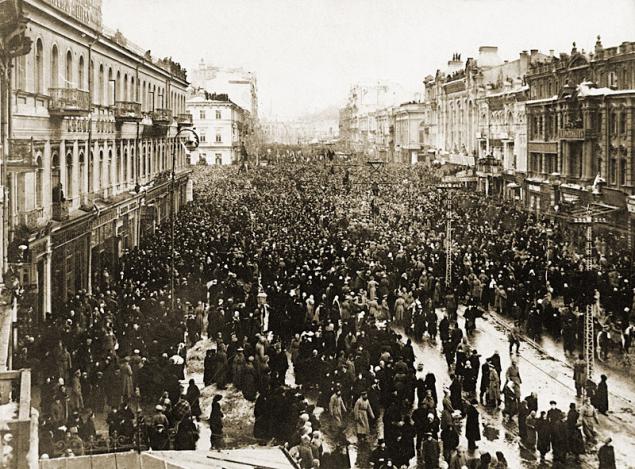
One of the first demonstrations on Khreschatyk during the February Revolution. Left in the background - the Duma Square (now Independence Square). 1917 / Publisher Wart
Symbolic personification of the fallen regime for many Kyivers was put on the main square of the city in less than five years before the monument of Peter Stolypin - Tsarist prime minister killed by terrorists in Kiev in 1911. Not surprisingly, this monument was subjected figuratively hanging in the first weeks of the revolution. Preparations lasted two days, and on the third day the statue was thrown from its pedestal.
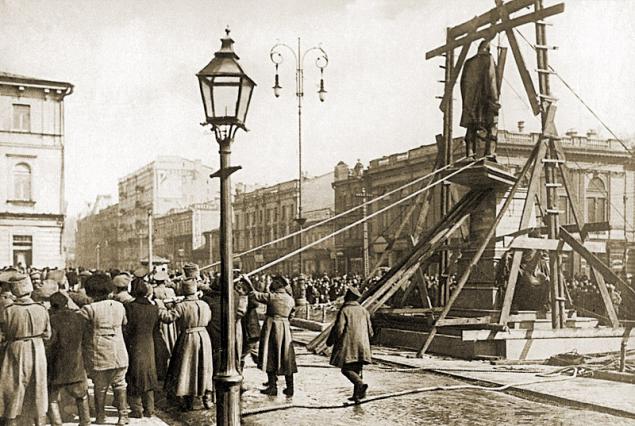
Removing the monument to Stolypin Duma Square. 17 (30) March 1917 / Publisher Wart
Central Rada. 7 (20) November 1917 - January 26 (February 8) 1918
Central Council - the future Ukrainian parliament (though unelected) was formed in the early days of the revolution. Its chairman was elected Hrushevsky. In the summer and autumn of 1917 the role of Parliament is gradually increased. When at the end of October, the authorities in the capital of the former empire conquered the Bolsheviks in Kiev formed three camps: 1) Kiev Military District (supports already deposed the Provisional Government); 2) the same Bolsheviks; 3) The Ukrainian forces arrayed around the Central Rada. A few days in the city was "triangular battle" - each party fought against the other two. The winners were the Central Rada. Publishes its 7 (20) November 1917 III-m was proclaimed Universal of the Ukrainian National Republic (though not as an independent state, but as part of Russia).
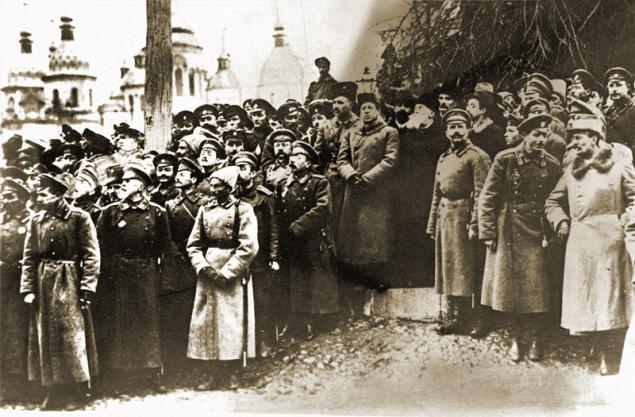
The meeting at the Sofia area. In the center - Simon Petlura Vynnychenko, Hrushevsky. October 1917 / Publisher Wart
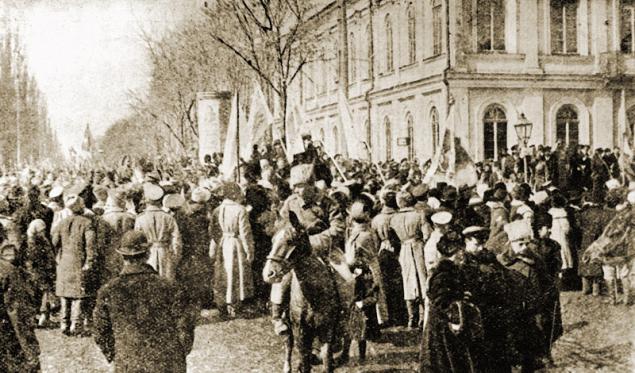
Demonstration on the occasion of the proclamation of the III-rd Universal of the Central Rada. 1917 / Publisher Wart
9 (22) January 1918 IV-m Universals was proclaimed the independence of Ukraine. The Bolsheviks, however, did not stop the fight. In the second half of January, they organized in Kiev armed rebellion against the Central Rada (went down in history as the January Uprising). The uprising was crushed - but a few days later the Bolshevik army under the command of Mikhail Muraveva attack from the east took Kiev.
The Bolsheviks. January 26 (February 8) - March 1, 1918
The arrival of the Bolsheviks in the city was marked by a large number of victims (estimated then was shot several thousand people are a danger to the new government, with its point of view). However, the Bolsheviks heroize their supporters who died during the events of January.
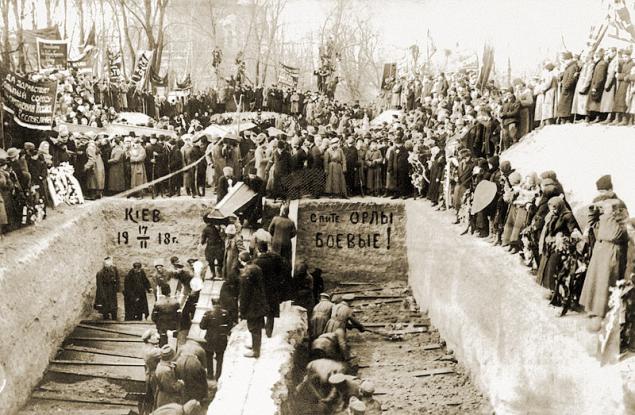
Funeral participants January Uprising in Kiev. February 17, 1918 / Publisher Wart
The first Bolshevik government in Kiev lasted a little over a month. Central Rada, who had to evacuate from Kiev to sign the Brest peace with Germany and Austria-Hungary, requested military assistance from new allies. Bolsheviks easily supplanted superior military force.
Central Rada. March 1 - April 29, 1918
Together with the Germans in the city returned Ukrainian army - and the Central Rada.
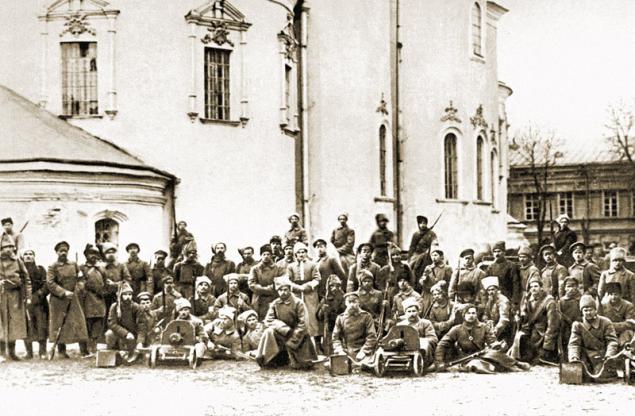
The troops of the Central Rada at St. Michael's Cathedral. 1918 / Publisher Wart
As the nominal power in Kiev and Ukraine, the Central Council, but in reality poorly controlled the situation even in the capital. She did not enjoy prestige among the masses and has no real power. Actual masters of the situation were the Germans interested in Ukraine, especially economically (they needed bread!) And allows himself, in modern terms, a gross interference in the internal affairs of an independent state. The Germans made laws and orders as are deemed necessary and demanded from the Ukrainians their strict enforcement.
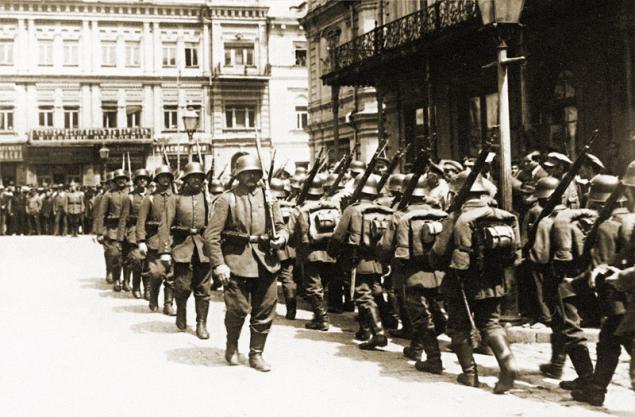
Changing of the guard at the building of German thought on the Duma Square. 1918 / Publisher Wart
The second power of the Central Rada lasted less than two months and ended with the German "guest" bored hosts ... The formal reason for the dissolution of Parliament was the arrest of the banker Abraham the good that the Germans declared illegal, opened its investigation - and April 28 in the meeting room of the Ukrainian parliament went German lieutenant and commanded, "Hands up!". Obeys all but the presiding Hrushevsky ...
Getman. April 29 - December 14, 1918
The next day, April 29, the Central Council met at its last meeting - but on the same day at the circus Krutikova on Mykolayiv Street (now the street Gorodetsky) held a so-called "congress farmers", which elected a new ruler of Ukraine with the old hetman title - Skoropadskiy.
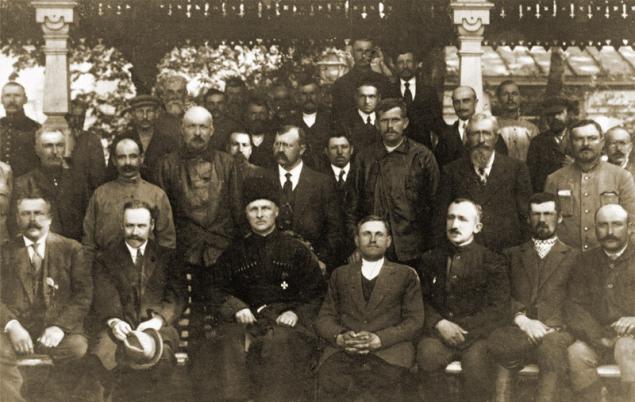
Getman Skoropadskiy delegates congress hleborobov.1918 year / Publisher Wart
In fact, there was a classic coup. UNR was renamed the Ukrainian State. However, the real power in the new state largely remained in those who had the real power - the Germans.
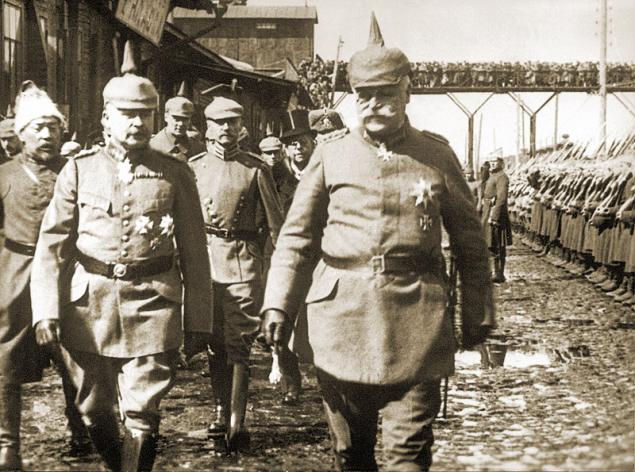
Meeting at the Kiev station Commander Army Group "Kiev" Field Marshal Hermann von Eichhorn. April 1918 / Publisher Wart
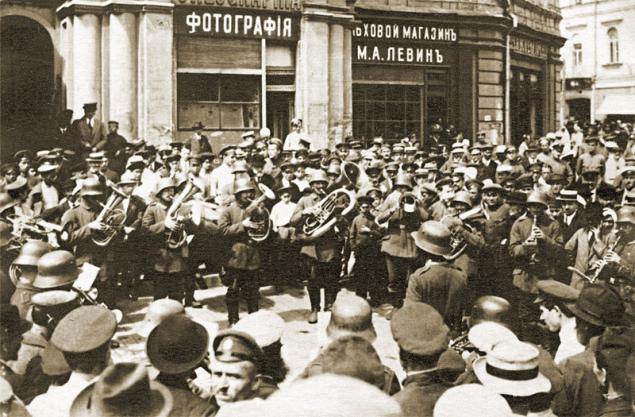
German military band in front of the City Council. May 1918 / Publisher Wart
All the people of Kiev, who left vague memories of this time, they are unanimous in their impressions: the highest order was "under the Germans." Become safer to walk the streets, in the shops there goods, restaurants and theaters are bursting from the public ... Kiev, among other things, was crowded with refugees from Moscow and St. Petersburg, which lives under the Bolsheviks did not suit. There were, however, in Kiev, and events that are not characteristic for peacetime. June 6, 1918 there was a huge explosion forces artillery depots in Zverinets practically the erased from the face of the earth the whole area of the city. Was it a tragic accident or sabotage, It was never revealed.
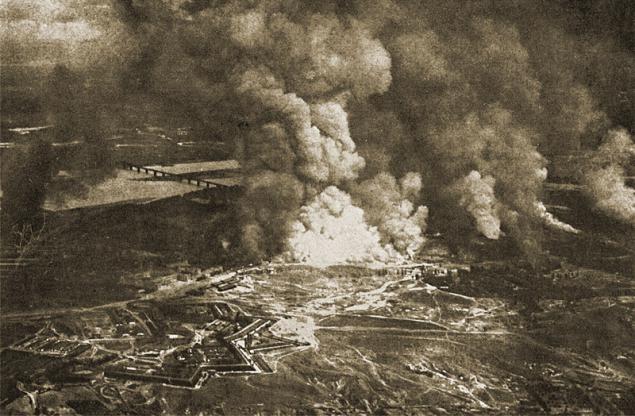
Explosion artillery depots and started a fire at menagerie. June 6, 1918 / Publisher Wart
July 30 in the heart of Kiev, Nikolayev on the street, was killed by a bomb Hermann von Eichhorn. Terrorist - SR Boris Donskoy - was caught in the act and soon executed. Germans "tighten the screws" and illusions about who runs the affairs of the state, it became even less.
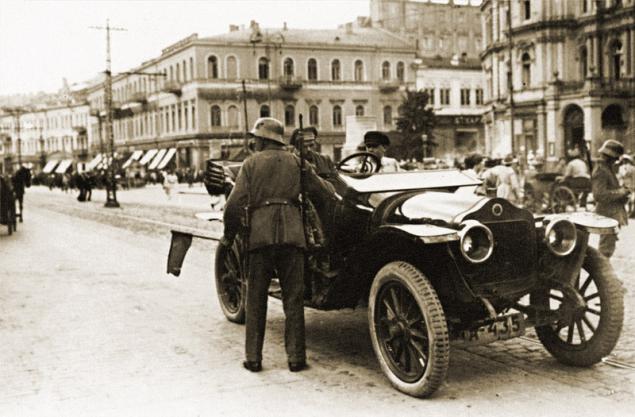
Tight security after killing Field Marshal Eichhorn. Verification of documents on Khreschatyk / Publisher Wart
When November 11 Germans surrendered in World War II, it became clear that the Ukrainian State will have to solve. Dissatisfied with the authorities of the hetman and before that was enough. A few days later the organization was established, called on the French revolutionary manner - the director - and headed antigetmanskoe uprising. Directories troops led by Simon Petlyura quickly came to Kiev, which, as it turned out, very few people would like to protect. The city kept only as long as it was in the interests of those same Germans (who wanted to quietly withdraw from Ukraine). December 14, 1918 hetman abdicated and went to Kiev Petlyury troops. That these events told in Mikhail Bulgakov "White Guards» ...
source Your text to link ...
Will focus on the unique period, nothing like that in the history of Kiev was not previously and - hopefully! - Does not happen in the future. For thirty-nine months, from March 1917 to June 1920, the government changed in fourteen times. Some of the then Kiev were practically bloodless coups, and others - have cost the lives considerable number Kyivers ...
Text © Stefan Mashkevich. Publisher "Wart»
Source of illustrations: a collection of the publishing house "Wart", photographs of TSGKFFAU them. G. Wheat

Provisional Government. 2 (15) of March - 7 (20) November 1917
The news of the fall of three hundred years of the Romanov dynasty reached Kiev is not instantaneous. In our city, at first everything was calmer than in Petrograd - but learning about the variables (their herald to Kiev became a State Duma deputy Alexander Bublikov, send a telegram to the famed Mikhail Bulgakov, which began with the words "The old regime has fallen"), Kiev residents took to the streets. The word "Freedom!" Was in the air, though, perhaps, a few at a time to understand exactly what is behind it, and that very few people knew how it would end ...

One of the first demonstrations on Khreschatyk during the February Revolution. Left in the background - the Duma Square (now Independence Square). 1917 / Publisher Wart
Symbolic personification of the fallen regime for many Kyivers was put on the main square of the city in less than five years before the monument of Peter Stolypin - Tsarist prime minister killed by terrorists in Kiev in 1911. Not surprisingly, this monument was subjected figuratively hanging in the first weeks of the revolution. Preparations lasted two days, and on the third day the statue was thrown from its pedestal.

Removing the monument to Stolypin Duma Square. 17 (30) March 1917 / Publisher Wart
Central Rada. 7 (20) November 1917 - January 26 (February 8) 1918
Central Council - the future Ukrainian parliament (though unelected) was formed in the early days of the revolution. Its chairman was elected Hrushevsky. In the summer and autumn of 1917 the role of Parliament is gradually increased. When at the end of October, the authorities in the capital of the former empire conquered the Bolsheviks in Kiev formed three camps: 1) Kiev Military District (supports already deposed the Provisional Government); 2) the same Bolsheviks; 3) The Ukrainian forces arrayed around the Central Rada. A few days in the city was "triangular battle" - each party fought against the other two. The winners were the Central Rada. Publishes its 7 (20) November 1917 III-m was proclaimed Universal of the Ukrainian National Republic (though not as an independent state, but as part of Russia).

The meeting at the Sofia area. In the center - Simon Petlura Vynnychenko, Hrushevsky. October 1917 / Publisher Wart

Demonstration on the occasion of the proclamation of the III-rd Universal of the Central Rada. 1917 / Publisher Wart
9 (22) January 1918 IV-m Universals was proclaimed the independence of Ukraine. The Bolsheviks, however, did not stop the fight. In the second half of January, they organized in Kiev armed rebellion against the Central Rada (went down in history as the January Uprising). The uprising was crushed - but a few days later the Bolshevik army under the command of Mikhail Muraveva attack from the east took Kiev.
The Bolsheviks. January 26 (February 8) - March 1, 1918
The arrival of the Bolsheviks in the city was marked by a large number of victims (estimated then was shot several thousand people are a danger to the new government, with its point of view). However, the Bolsheviks heroize their supporters who died during the events of January.

Funeral participants January Uprising in Kiev. February 17, 1918 / Publisher Wart
The first Bolshevik government in Kiev lasted a little over a month. Central Rada, who had to evacuate from Kiev to sign the Brest peace with Germany and Austria-Hungary, requested military assistance from new allies. Bolsheviks easily supplanted superior military force.
Central Rada. March 1 - April 29, 1918
Together with the Germans in the city returned Ukrainian army - and the Central Rada.

The troops of the Central Rada at St. Michael's Cathedral. 1918 / Publisher Wart
As the nominal power in Kiev and Ukraine, the Central Council, but in reality poorly controlled the situation even in the capital. She did not enjoy prestige among the masses and has no real power. Actual masters of the situation were the Germans interested in Ukraine, especially economically (they needed bread!) And allows himself, in modern terms, a gross interference in the internal affairs of an independent state. The Germans made laws and orders as are deemed necessary and demanded from the Ukrainians their strict enforcement.

Changing of the guard at the building of German thought on the Duma Square. 1918 / Publisher Wart
The second power of the Central Rada lasted less than two months and ended with the German "guest" bored hosts ... The formal reason for the dissolution of Parliament was the arrest of the banker Abraham the good that the Germans declared illegal, opened its investigation - and April 28 in the meeting room of the Ukrainian parliament went German lieutenant and commanded, "Hands up!". Obeys all but the presiding Hrushevsky ...
Getman. April 29 - December 14, 1918
The next day, April 29, the Central Council met at its last meeting - but on the same day at the circus Krutikova on Mykolayiv Street (now the street Gorodetsky) held a so-called "congress farmers", which elected a new ruler of Ukraine with the old hetman title - Skoropadskiy.

Getman Skoropadskiy delegates congress hleborobov.1918 year / Publisher Wart
In fact, there was a classic coup. UNR was renamed the Ukrainian State. However, the real power in the new state largely remained in those who had the real power - the Germans.

Meeting at the Kiev station Commander Army Group "Kiev" Field Marshal Hermann von Eichhorn. April 1918 / Publisher Wart

German military band in front of the City Council. May 1918 / Publisher Wart
All the people of Kiev, who left vague memories of this time, they are unanimous in their impressions: the highest order was "under the Germans." Become safer to walk the streets, in the shops there goods, restaurants and theaters are bursting from the public ... Kiev, among other things, was crowded with refugees from Moscow and St. Petersburg, which lives under the Bolsheviks did not suit. There were, however, in Kiev, and events that are not characteristic for peacetime. June 6, 1918 there was a huge explosion forces artillery depots in Zverinets practically the erased from the face of the earth the whole area of the city. Was it a tragic accident or sabotage, It was never revealed.

Explosion artillery depots and started a fire at menagerie. June 6, 1918 / Publisher Wart
July 30 in the heart of Kiev, Nikolayev on the street, was killed by a bomb Hermann von Eichhorn. Terrorist - SR Boris Donskoy - was caught in the act and soon executed. Germans "tighten the screws" and illusions about who runs the affairs of the state, it became even less.

Tight security after killing Field Marshal Eichhorn. Verification of documents on Khreschatyk / Publisher Wart
When November 11 Germans surrendered in World War II, it became clear that the Ukrainian State will have to solve. Dissatisfied with the authorities of the hetman and before that was enough. A few days later the organization was established, called on the French revolutionary manner - the director - and headed antigetmanskoe uprising. Directories troops led by Simon Petlyura quickly came to Kiev, which, as it turned out, very few people would like to protect. The city kept only as long as it was in the interests of those same Germans (who wanted to quietly withdraw from Ukraine). December 14, 1918 hetman abdicated and went to Kiev Petlyury troops. That these events told in Mikhail Bulgakov "White Guards» ...
source Your text to link ...
Yulia Lipnitskaya. "It is a pity that nakosyachila."
Protection of the Russian language from a healthy mind

